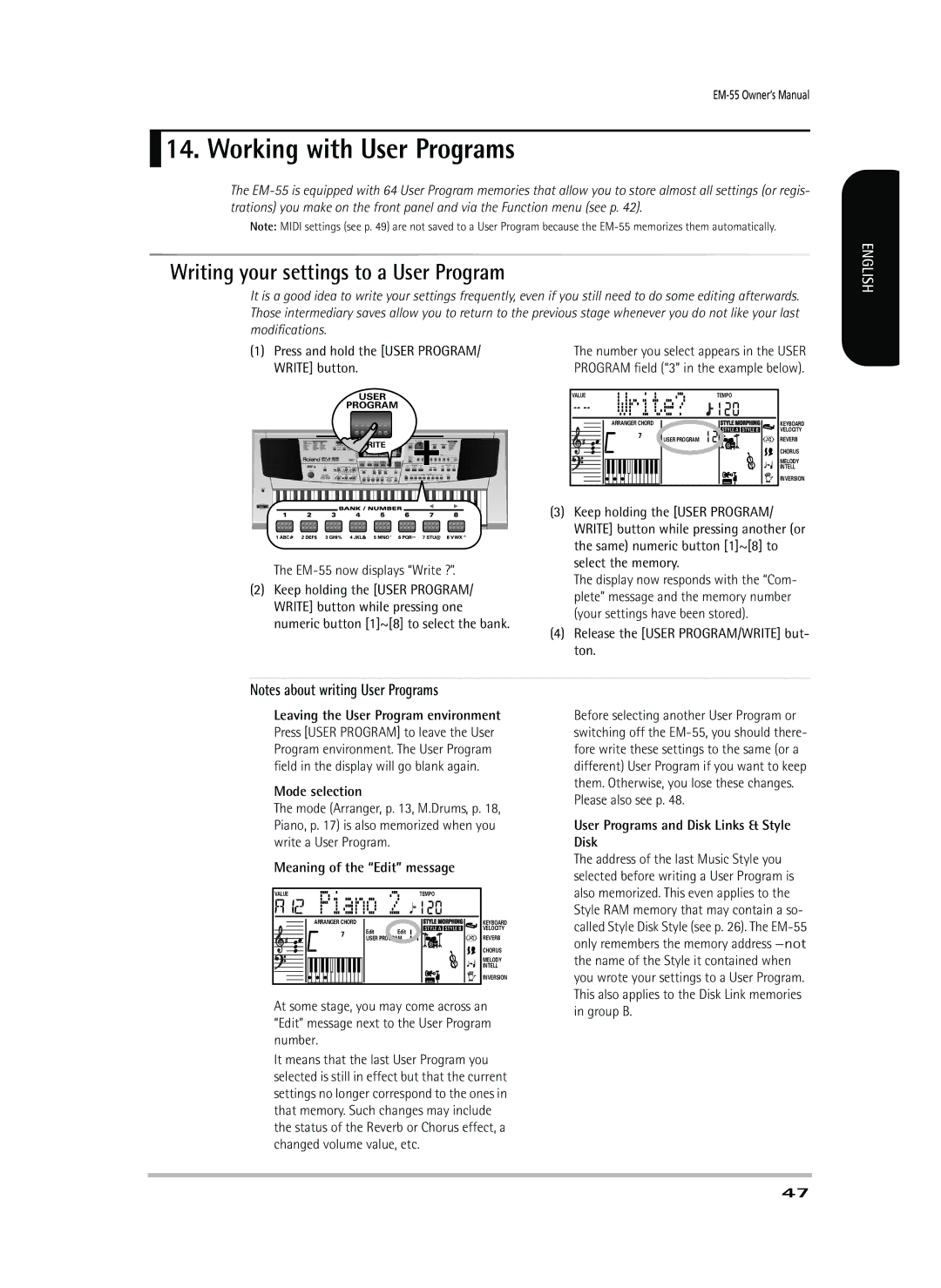
 14. Working with User Programs
14. Working with User Programs
The
Note: MIDI settings (see p. 49) are not saved to a User Program because the
Writing your settings to a User Program
It is a good idea to write your settings frequently, even if you still need to do some editing afterwards. Those intermediary saves allow you to return to the previous stage whenever you do not like your last modifications.
(1) Press and hold the [USER PROGRAM/ | The number you select appears in the USER |
WRITE] button. | PROGRAM field (“3” in the example below). |
ENGLISH
USER
PROGRAM
WRITE
The EM-55 now displays “Write ?”.
(2)Keep holding the [USER PROGRAM/ WRITE] button while pressing one numeric button [1]~[8] to select the bank.
VALUE | Write? | 120 |
|
| TEMPO |
| |
| ARRANGER CHORD |
| KEYBOARD |
| USER PROGRAM 12 | VELOCITY | |
| REVERB | ||
|
|
| CHORUS |
|
|
| MELODY |
|
|
| INTELL |
|
|
| INVERSION |
(3)Keep holding the [USER PROGRAM/ WRITE] button while pressing another (or the same) numeric button [1]~[8] to select the memory.
The display now responds with the “Com- plete” message and the memory number (your settings have been stored).
(4)Release the [USER PROGRAM/WRITE] but- ton.
Notes about writing User Programs
Leaving the User Program environment Press [USER PROGRAM] to leave the User Program environment. The User Program field in the display will go blank again.
Mode selection
The mode (Arranger, p. 13, M.Drums, p. 18, Piano, p. 17) is also memorized when you write a User Program.
Meaning of the “Edit” message
VALUE | Piano 2 | 120 |
| |
|
| TEMPO |
| |
| ARRANGER CHORD |
|
| KEYBOARD |
| Edit | Edit | 11 | VELOCITY |
| REVERB | |||
| USER PROGRAM | |||
|
|
|
| CHORUS |
|
|
|
| MELODY |
|
|
|
| INTELL |
|
|
|
| INVERSION |
At some stage, you may come across an “Edit” message next to the User Program number.
It means that the last User Program you selected is still in effect but that the current settings no longer correspond to the ones in that memory. Such changes may include the status of the Reverb or Chorus effect, a changed volume value, etc.
Before selecting another User Program or switching off the
User Programs and Disk Links & Style Disk
The address of the last Music Style you selected before writing a User Program is also memorized. This even applies to the Style RAM memory that may contain a so- called Style Disk Style (see p. 26). The
47
